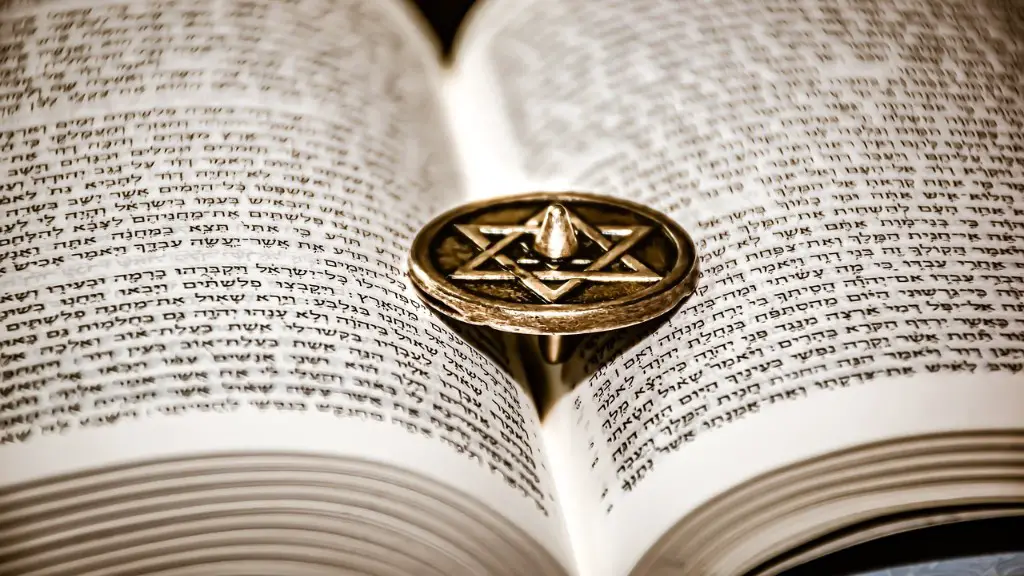Overview
Hinduism is one of the oldest and most diverse religions in the world. It is based on a number of ancient texts, with the most important being the Vedas, which are considered to be the earliest, most sacred Hindu scriptures. One of these ancient texts, the Upanishads, is considered to be the basis of Hinduism and contains the teachings of the Vedas. The Upanishads are considered to be divine revelations, and are often referred to as “the word of God”. The other ancient texts that form the core of Hinduism are the Bhagavad-Gita, the Ramayana, and the Mahabharata. These texts are collectively known as the “Holy Books of Hinduism”, and they provide insight into and guidance on the concepts and beliefs of Hinduism.
The Bhagavad Gita
The Bhagavad Gita is one of the most important scriptures of Hinduism, and is often referred to as one of the most important Hindu texts. Written in Sanskrit, it is a spiritual discourse between Lord Krishna and Struggling ruler Arjuna concerning their Karma doctrines and divine power. It details how one should live a good and satisfying life, and it is believed to be the most reliable source of Hindu philosophy. The Bhagavad Gita is divided into eighteen sections called Shlokas, each of which contains deep metaphysical insights and moral lessons. Along with the Bhagavad Gita, the Upanishads and the Vedas, the Bhagavad Gita is often used by Hindu scholars as a source of spiritual knowledge and moral instruction.
The Ramayana And The Mahabharata
The Ramayana and the Mahabharata are two of the most important Hindu holy books. They are both ancient texts that deal with the morals and values of Hinduism, as well as its core principles. They provide insight into the culture, beliefs and philosophy of the Hindu religion. The Ramayana was written by the sage Valmiki, and recounts the story of Rama and Sita’s love story, as well as their fight against the demon king Ravana. The Mahabharata was written by the sage Vyasa, and tells the story of the Kaurava and Pandavas’ war. The Mahabharata is considered to be the longest epic of all time, and it contains detailed philosophical discussion about dharma, karma, and the four goals of life.
The Vedas
The Vedas are considered to be the most important of all Hindu texts, and they are the earliest sacred scriptures of the Hindu religion. The Vedas contain hymns, mantras and prayers, and are seen as the source of all knowledge on the laws of the Universe. They are divided into four main books: the Rigveda, the Yajurveda, the Samaveda and the Atharvaveda. The Vedas are believed to have been composed by the ancient Hindu sages, and they contain powerful gods and goddesses and provide insight into the ancient Hindu beliefs and practices.
Conclusion
The four holy books of Hinduism are the Bhagavad Gita, the Upanishads, the Ramayana and the Mahabharata, and the Vedas. These texts contain the core wisdom and religious knowledge of Hinduism, and provide insight into Hindu culture and beliefs. They are also considered to be divine revelations, and are a source of spiritual guidance and insight. Through these texts, Hindus can gain a deeper understanding of Hinduism, which is one of the world’s oldest and most diverse religions.
The Significance Of The Holy Books Of Hinduism
The holy books of Hinduism are deeply sacred and are the source of spiritual knowledge and guidance. They provide insight into the concepts and beliefs of Hinduism and provide instructions and teachings on how to achieve a balanced and meaningful life. The four holy books are also seen as the source of knowledge about the laws of the universe and the ultimate truth. Through the holy books, Hindus can gain a deeper understanding of their faith and of the world around them.
The Influence Of The Holy Books Of Hinduism
The holy books of Hinduism have had a profound impact on the lives of Hindus throughout history. They have been used as a source of guidance and inspiration, and are seen as a timeless source of scripture and wisdom. The four holy books have had significant influence on Hindu parenting and religious practices, and have helped to shape the beliefs and values of Hinduism. The holy books also provide insight into the history and culture of the Hindu religion, and they have been used as a source of moral education.
The Use Of The Holy Books Of Hinduism Today
The holy books of Hinduism are still widely used today. Hindus use them as a source of spiritual knowledge and guidance, and as a way to gain a deeper understanding of their faith. The holy books are also used to help shape the beliefs and values of Hindus, and are used as a source of moral education. They are also used as a way to provide comfort and solace to Hindus in times of distress, and to help guide Hindus in their everyday lives.
Modern Interpretations Of The Holy Books Of Hinduism
The holy books of Hinduism continue to be interpreted by scholars in a variety of ways. They are seen as a source of knowledge about the nature of reality, and Hindu scholars use them to gain a deeper understanding of the religion and its core doctrines. The holy books are studied by both academics and Hindus alike, and they often form the basis of spiritual discussions and debates. The holy books of Hinduism are also used as a source of inspiration and guidance by Hindu leaders and teachers, who use them to provide insight into Hinduism and to help Hindus gain a deeper understanding of their faith.
